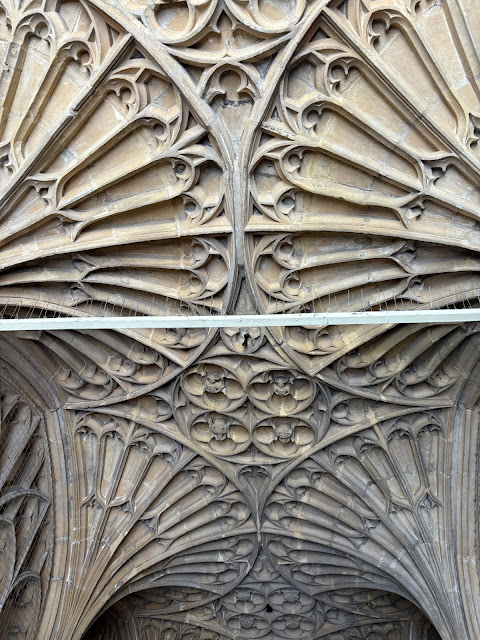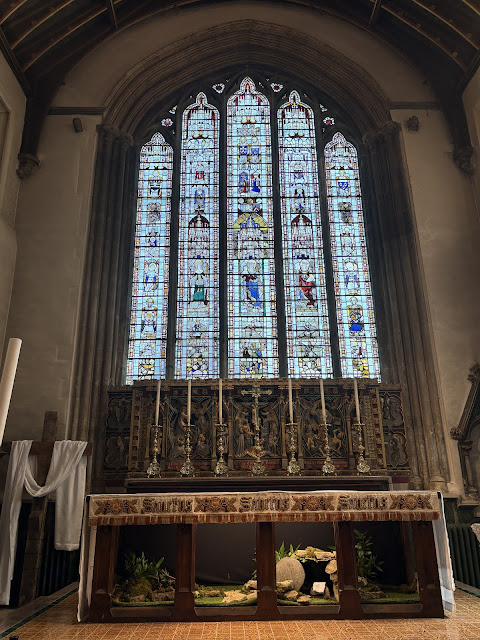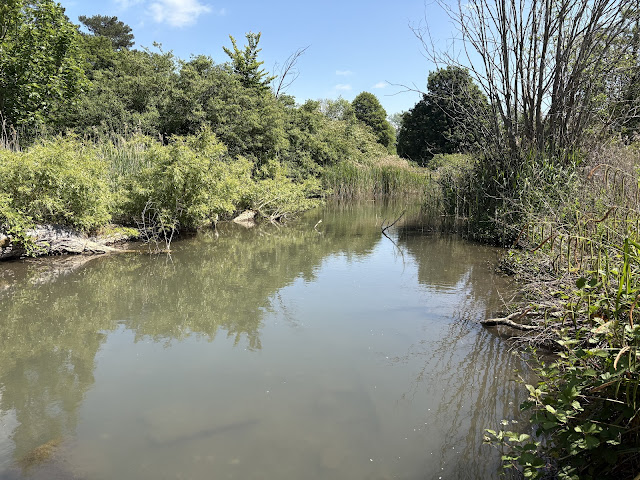The Abbey in Cirencester was dedicated to St Mary. It was founded as an Augustinian monastery in 1117 on the site of an earlier church, the oldest-known Saxon church in England, which had itself been built on the site of a Roman structure. The monastery was suppressed in 1539 by Henry VIII.
The area that contained the nucleus of the monastery is now a public park, and only the Norman Arch, an original gateway to the abbey remain above ground.
The church of St John Baptist is situated in Market Square, is built of Cotswold stone and is one of the largest parish churches in England. It contains various tombs and monuments and some fragments of medieval stained glass and wall paintings.
We entered the church
and were immediately impressed by the ceiling
There are several stained glass windows. Some of these include fragments of medieval glass but are largely 18th century.
The pipe organ was built by Father Willis in 1895 with a case by George Gilbert Scott
There is a Lego model of an interpretation of how the Abbey of St Mary may have looked in the 1400s.
good view of the church from here
And then it was time to enter the Abbey grounds. As I mentioned earlier, the Abbey, dedicated to St Mary, was founded as an Augustinian monastery in 117 on the site of an earlier church, the oldest-known Saxon church in England. The church was greatly enlarged in the 14th century with addition of an ambulatory to the east end. The monastery was suppressed in 1539.
The area that contained the nucleus of the monastery is now a public park, and only a Roman Arch, an original gateway to the abbey, and parts of the prcinct wall remain above ground. The edict of Henry VIII suppressing the major Abbeys and Monasteries of England hit Cirencester on the morning of December 19th, 1539.






















No comments:
Post a Comment